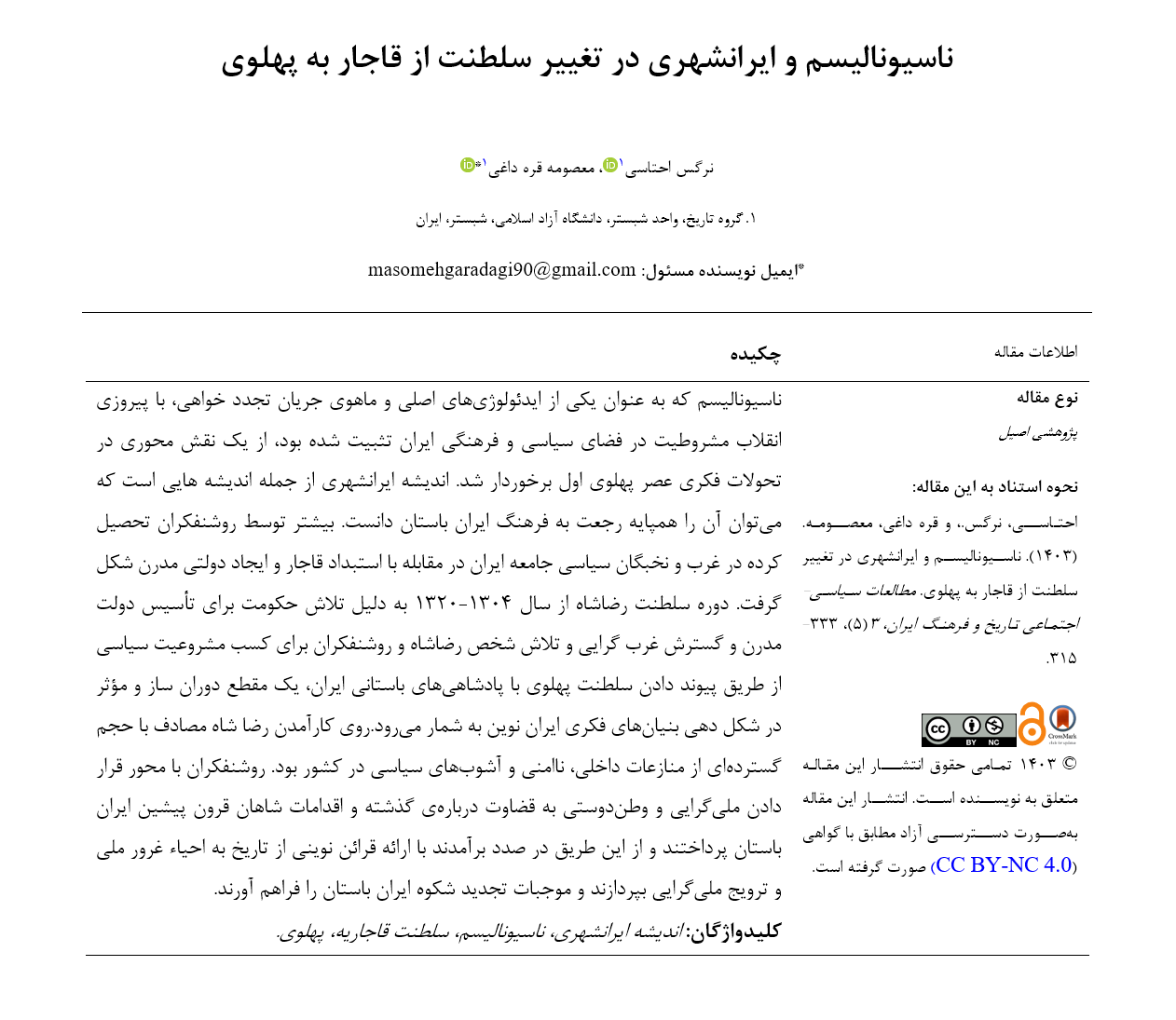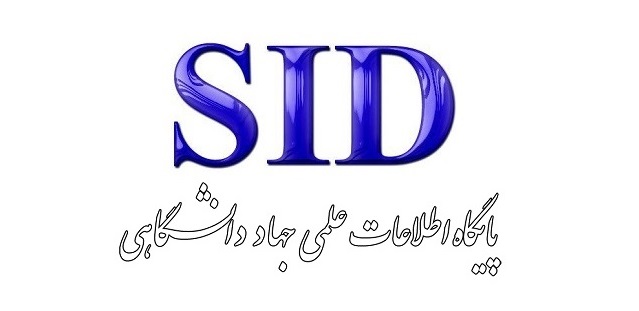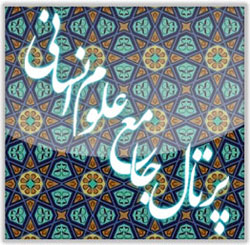Nationalism and Iranshahri Thought in the Transition of Monarchy from Qajar to Pahlavi
Keywords:
First Pahlavi, Iranshahri thought, Qajar monarchy, nationalismAbstract
Nationalism, established as one of the principal and essential ideologies of the modernization movement with the success of the Constitutional Revolution, assumed a central role in the intellectual transformations of the Reza Shah era. Iranshahri thought is among those intellectual currents that can be regarded as a revivalist return to Iran’s ancient cultural heritage. This discourse was primarily shaped by Western-educated intellectuals and the political elites of Iranian society in opposition to Qajar despotism and in pursuit of creating a modern state. The reign of Reza Shah (1925–1941) is considered a formative and influential period in laying the intellectual foundations of modern Iran, due to the regime’s efforts to establish a modern state, expand Westernization, and the endeavors of Reza Shah and intellectuals to legitimize the Pahlavi monarchy by linking it with the ancient Iranian monarchies. The rise of Reza Shah coincided with widespread domestic conflict, insecurity, and political unrest across the country. Intellectuals, with an emphasis on nationalism and patriotism, engaged in a reevaluation of the past and the actions of ancient Persian kings, seeking to revive national pride and promote nationalism by presenting new interpretations of history that could restore the former glory of ancient Iran.
Downloads
References
Adamiyat, F. (1957). The Idea of Progress and Constitutional Government (The Era of Sepahsalar). Amir Kabir Publishing.
Afshar, I. (1955). Abbas Eqbal Ashtiani. Savād va Bayāz.
Akbari, M. A. (2005). Genealogy of the New Iranian Identity. Scientific and Cultural Publishing.
Ansari, M. M. (2011). Reza Shah's Press: Iran-Shahr Ideology and Legitimacy Construction. [Journal Title Missing].
Bashiriyeh, H. (2004). Identity, Nationality, and Ethnicity. In H. Ahmadi (Ed.). Institute for Humanities and Cultural Studies.
Bashiriyeh, H. (2023). The Transition to Democracy (8th ed.). Negah Mo'aser Publishing.
Bigdeloo, R. (2019). The Construction of Iranian National Identity Based on Race During World War I. Historical Researches of Iran and Islam(24).
Fasihi, S. (1994). Major Trends in Historiography during the First Pahlavi Era. Novand.
Ferdowsi, A. (1991). Nameh-ye Namvar: Selected Verses from the Shahnameh.
Ghaderi, H., & Rostamvandi, T. (2006). Iranian National Thought: Characteristics and Conceptual Components. Scientific-Research Journal of Humanities(59).
Ghaderi, T., & Mirzaei, S. A. (2011). Iranian Nationalism in the 19th Century. Sociological studies, 18(2).
Kachouyan, H. (2010). Developments in Iranian Identity Discourses. Nashr-e Ney.
Kazemzadeh Iranshahr, H. (1927). Iranshahr Magazine (First ed., Vol. 4). Eqbal Publishing.
Mirzaei, B., Mahmoudi, M., Karimi Malah, A., & Zargari, A. A. (2020). The Transformation of Intellectual Identity and Its Role in the Rise of Reza Shah. Social Development Quarterly, 14(4).
Mollaei Tavani, A. (2002). Ayyandeh Magazine and Historiography Based on National Identity. National Studies Quarterly, 4.
Pour Davoud, E. (1976). The Culture of Ancient Iran (Vol. 1). [Publisher Not Specified].
Rostami, M., & Zibakalam, S. (2018). Genealogy of the Ideology of Ancient-oriented Nationalism and the Othering Process. Islamic World Political Studies, 8(3), 127-151.
Saqebfar, M. (1998). Ferdowsi's Shahnameh and the Philosophy of Iran's History. Qatreh Publishing.
Tavakoli-Targhi, M. (2003). Indigenous Modernity and Historical Reconsideration. Nashr-e Tarikh-e Iran.
Vincent, A. (1999). Theories of the State. Ney Publishing.

Downloads
Published
Submitted
Revised
Accepted
Issue
Section
License
Copyright (c) 2025 نرگس احتاسی (نویسنده); معصومه قره داغی (نویسنده مسئول)

This work is licensed under a Creative Commons Attribution-NonCommercial 4.0 International License.







